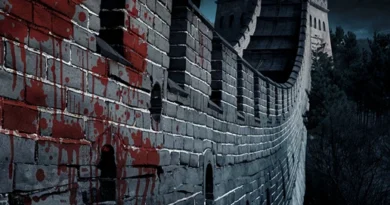Facts About The Leaning Tower Of Pisa That Would Make You Crook From Fear
There are many reasons why a tower can become famous. Size certainly matters regarding the most recognizable towers on the world’s tourist map. It could be the tallest tower in the world (Burj Khalifa in Dubai), a tower with an iconic design (like the Eiffel Tower in Paris), a tower with an ancient history (like London’s Big Ben), or just a tower that was misdesigned so that today it is crooked. Yes, like the Leaning Tower of Pisa in Italy.
The Tower of Pisa attracts about five million tourists a year, making it one of the most visited towers in the world. Beyond the unfortunate fact that about 99% of them are people making strange hand signs near the tower to take photos that will get a few likes on Social Media, it embodies a fascinating history and is considered a unique cultural spot. You can tell them by considering creepy and fun facts about The Leaning Tower of Pisa, which we can easily consider a scary historical site.
Here’s everything interesting and scary to know about the tower: from the main reasons for the design failure, through terrible events that occurred in the tower, to its current tourist aspects.
What Is The Leaning Tower Of Pisa?
The Leaning Tower of Pisa (“Torre pendente di Pisa” in Italian) is a bell tower that, although it stands on its own, is part of the Pisa Cathedral complex, the Duomo.
💀 Killer Deals & Scary Recommendations 💀
🎭 Costumes & Accessories
HalloweenCostumes Fun Costumes Entertainment Earth
🛒 Online Shopping
AliExpress Amazon Walmart Etsy
🧛 Collectibles & Horror Brands
Funko Hot Topic Lego Spirit Halloween
🎢 Attractions & Tours
GetYourGuide Tiqets Viator Klook
📖 Blogs & Horror Sites
Bloody Disgusting iHorror Fangoria
🩸 Disclaimer: Some links are affiliate links. The price stays the same – it just helps keep the site alive 👻
How Tall Is The Leaning Tower Of Pisa?
The tower is famous for many reasons, and I am not sure its height is one of the leading reasons. The Tower of Pisa rises to about 58.46 meters, about 55 meters above ground level. The total weight of the tower is something like 14,500 tons, and its center of gravity is more than 22.5 meters above the base.
These figures may seem random, but they can explain the tower’s unusual inclination, as we will explain below.
Where Is The Leaning Tower Of Pisa?
The Tower of Pisa is located in the city of the same name in Italy, part of the Tuscany region. Pisa, located at the mouth of the Arno River with the Mediterranean Sea, is a rather pleasant city with a population of about 90,000.
On a side note, it has some beautiful points of interest, which many tourists miss because they come just to see the tower, take the traditional photos next to it, or, at most, go up to the observation deck.
Let’s go into smaller resolutions of location. The Leaning Tower of Pisa is located in Piazza dei Miracoli, loosely translated as “Square of Miracles” (Piazza dei Maracoli), which was declared a World Heritage Site by UNESCO in 1987. The impressive square, surrounded by a wall, was one of the most prominent art strongholds in the world during the Middle Ages. Since then, there have been four impressive buildings of religious importance: the Duomo (or in its full name, the Cathedral of Santa Maria Assunta), the Baptistery (baptism building), the monumental cemetery Camposanto Monumentale di Pisa, and, of course, the Tower of Pisa.
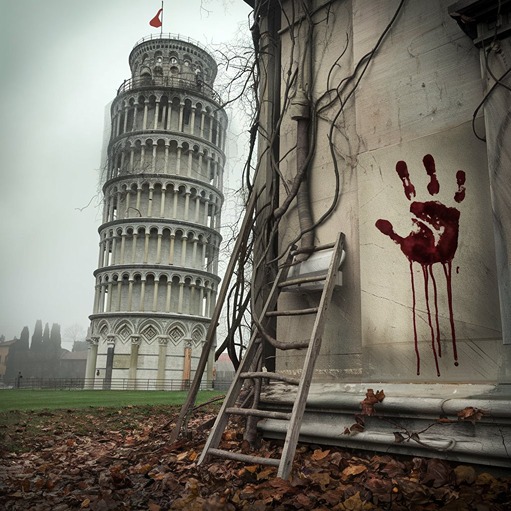
When Was The Leaning Tower Of Pisa Built?
According to the well-known saying about the land of the boot, Rome wasn’t built in a day, etc. The Tower of Pisa, too. According to the testimonies, its construction lasted about 200 years, with many breaks in between due to the condition of the building and other factors of historical importance.
So, how old is The Leaning Tower of Pisa? The starting point is August 9, 1173, when the tower’s foundations were laid and its actual construction began. About five years later, when they had already reached the area of the structure’s second floor, its famous inclination began. In the following decades, Pisa was busy with things other than building towers – for example, bloody wars with Genoa, Lucca, and Florence – and construction was forgotten. It resumed in 1260 after the years of interruption had contributed to stabilizing the ground around the tower.
Under another architect, whoever the hell he was, attempts began to balance the tower in a way that seemed quite logical in practice: to build one side of the upper floors higher than the other in an attempt to solve the tilt. Then came another war with Genoa (1284), and Pisa came out on top. Only after the recovery in the 14th century did construction of the tower resume. The seventh floor was completed in 1319, and a little over five decades later, the famous bell tower.
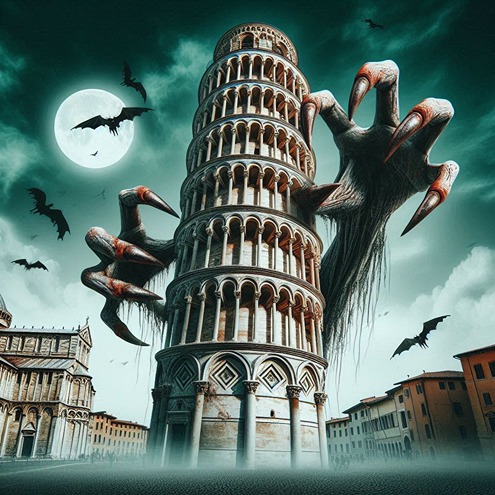
Who Built The Leaning Tower Of Pisa?
You don’t have to be a genius to know that, under these circumstances, the answer to the question of who designed the Leaning Tower of Pisa is complex. First, because more than one person is naturally responsible for the construction. The construction consisted of three phases throughout history, each designed and built by a different person, clearly reflected in the tower combining several building styles.
In addition, there is controversy about the professionals responsible for the work. The prominent names mentioned in this context are:
![]() A relatively unknown architect named Guglielmo
A relatively unknown architect named Guglielmo
![]() The 12th-century Italian sculptor and architect Bonanno Pisano, who was known for his work combining Byzantine and classical elements, most of which in the city where he grew up and died
The 12th-century Italian sculptor and architect Bonanno Pisano, who was known for his work combining Byzantine and classical elements, most of which in the city where he grew up and died
![]() Another relatively unknown architect from Pisa, named Diotisalvi
Another relatively unknown architect from Pisa, named Diotisalvi
![]() Tommaso Pisano, an Italian sculptor and architect, who completed the construction and added Gothic elements.
Tommaso Pisano, an Italian sculptor and architect, who completed the construction and added Gothic elements.
One infamous name in this context is the engineer John Burland, who was supposed to supervise this project. The problem is that his knowledge of soil mechanics, which is the relevant field for this type of construction, was far from perfect. They say that when he studied for a bachelor’s degree at the University of Johannesburg, he received the lowest grades in that subject.
The Italian painter, architect, and researcher Giorgio Vasari, who is responsible for the series of artistic biographies “Lives of the Most Excellent Painters, Sculptors, and Architects” (whom we’ll meet, for example, in an article about the fascinating story of the Mona Lisa, speaking of Italian masterpieces), claims that Pisano was the first architect. Other studies, such as the one published in 2001, indicate that Diottiselvi took the reins.
Why Is The Leaning Tower Of Pisa Leaning?
We have come to the million-dollar question at the right time – or, if you prefer, the millions of tourists who visit the place yearly – and that is what causes the tower to lean significantly, with the rational fear that the Leaning Tower of Pisa may collapse someday.
Generally, the ground around the tower is not entirely suitable for tall and cumbersome structures. The ground consists mainly of sand and clay (in fact, the word “Pisa” comes from the Greek word meaning “marshland”), materials that are not strong enough for such pressures. In addition, the ground surface in the area is very low, only about two meters above sea level, making it challenging to create sufficient strength.
Over the years, in the absence of proper care, the tower’s inclination only became more and more severe. One of those responsible for this is Benito Mussolini, who, according to the stories, detested the tower and believed it to be a national disgrace. Mussolini saw the tower as a faulty structure that damaged the reputation of Italian construction. He recruited several experts, who drilled holes in the tower and filled them with mortar, thinking this would straighten the structure. The holes further undermined the stability of the building’s foundations, increased the inclination, and put the tower in tangible danger of collapse. I can say something metaphorical about the terrible Mussolini’s candidacy, but I don’t understand history enough to know if that’s true and which metaphor are we talking about.
In 1990, the inclination reached about 5.5 degrees, over 4 meters compared to the “normal” position of a plumb line descending straight from the tower’s center. Calculations showed that the tower could collapse entirely within 100 years, so the authorities decided to close the tower to visitors. An international committee of the best minds in the world gathered to resolve the situation, with the cost of restoration estimated at more than 23 million euros.
Here is a short video explaining the history of the Leaning Tower of Pisa:
How Do You Straighten A Crooked Tower?
If you saw “Superman 3” from 1983, you may remember the scene in which our Superman (Christopher Reeve) flies through the air and straightens the Tower of Pisa with immense strength. Unfortunately – and on our site, we like to explain myths that will ruin your childhood – in reality, this is impossible, believe it or not. First, we do not know of any people who can fly. Equally important, no human can straighten a tower that weighs about 2,000 elephants. Anyway, here’s the famous scene that will put you in the right mood, with a lot of nostalgia.
The main principle in the “war” against the leaning was mainly achieved thanks to a Roman engineer named Fernando Fraccina, who was experienced in stabilizing buildings in the challenging conditions of the Italian capital (parts of which stand on alluvial soil). The main principle is to strengthen the base on the side opposite the slope with the help of several operations. For example, adding dirt from the side opposite the slope and installing damaged weights contributed to the tower “going back” in terms of its slope.
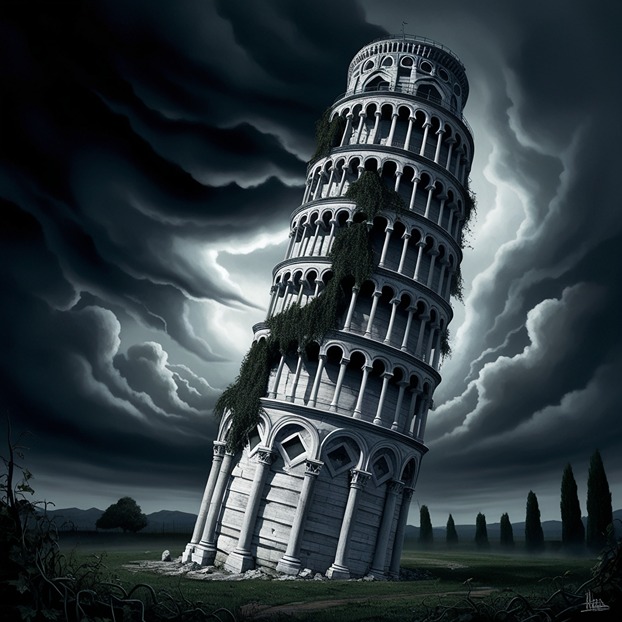
Many experts believed that such operations would not help or could even harm, partly because, throughout history, the direction of the tower’s inclination changed several times. Still, the opinion of the Roman expert was ultimately accepted. The restoration work included, for example, adding dirt from the opposite side of the slope and installing damaged weights, which contributed to the tower “going back” in terms of its slope.
In 2001, the tower was reopened to tourists, with a smaller slope of about 3.97 degrees “only.” The experts have their finger on the pulse, and every few years, active actions are taken, such as removing about 70 million tons of dirt in 2008. The assumption is that although the situation has significantly improved, it is still impossible to rest on our laurels over time. The current assumption is that the structure will be stable for about 200 years, but in this area, things may change. Some estimates say the tower should resume its tilt at the beginning of the 23rd century.
You’d Be Surprised, But There Is A More Crooked Tower In Pisa
Although the Tower of Pisa is the most famous leaning structure in the world, there are others whose slope is more remarkable, even if they are less well-known. Even Pisa has a building that leans more than the Leaning Tower of Pisa! That building is the bell tower of the Church of San Michele degli Scalzi in the eastern part of Pisa, which has a tilt of 5 degrees. The bell tower of the Church of San Nicola also leans, but “only” by 2.5 degrees.
The Leaning Tower of Suurhusen, a small village in northwestern Germany, held the title of the world’s most-leaning building for years, with a tilt more than 1.2 degrees greater than the Leaning Tower of Pisa. If you’re looking for some unusual modern architecture, as opposed to ancient buildings that have become crooked for unplanned reasons, you’ll find it at the Montreal Olympic Stadium in Canada. The Montreal Tower is the world’s tallest leaning building, at 165 meters. It has a 45-degree angle, “a little” more than the Leaning Tower of Pisa.
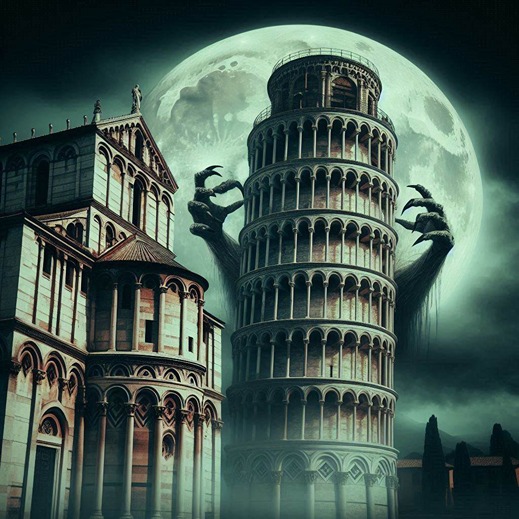
Crooked, But Above You: Will The Leaning Tower Of Pisa Fall?
The truth is that engineering – or, if you prefer, the human mind – is the main factor explaining why the Tower of Pisa is still around us and is still open to the public. Its survival is not apparent, given that the area has experienced several traumas, such as earthquakes, natural disasters, and wars.
The tower has also experienced some damage but has managed to survive them. In World War II, for example, the German army used the tower to observe the American military. When the Americans discovered this, they planned to bomb the structure, but at the very 90th minute, they decided to give up. Even when Pisa itself was bombed quite massively on August 31, 1943, and even when there were subsequent bombings that caused thousands of deaths and the destruction of a significant percentage of the buildings in the city, the Tower of Pisa and the essential sites near it remained unharmed.
The picture is interesting regarding the many earthquakes that plague the area because they could easily cause damage or even collapse a structure already leaning. Scientists from the University of Bristol in England believe that, quite surprisingly, the conditions that explain why the Tower of Pisa leans are also those that allow it to survive. In other words, the height of the tower and its high degree of rigidity, together with the fact that the ground around it is soft, mean that the tower’s vibrations are minimal, even when there is a strong earthquake.
What Is The Contribution Of The Tower Of Pisa To Science?
The Tower of Pisa is a testament to the challenges of human construction, the difficulties that nature sometimes conspires (especially when the planning is wrong), and the ability to solve the situation with many forces and impressive sums of money. However, from a scientific point of view, the tower is of a different importance. According to legend, the famous Italian scientist Galileo Galilei conducted the Leaning Tower of Pisa experiment in an attempt to study gravity.
The principle is that Galileo simultaneously dropped two completely different balls: the first a lead ball and the second a cotton ball. He was trying to prove that mass does not affect the time of fall, meaning that the acceleration of the objects’ fall is the same despite the differences in their mass, so they should reach the ground simultaneously.
There had already been scientists and experimenters who had done good things before. Still, Galileo tried to experiment “in his way,” partly to show that Aristotle’s concept of gravity, which claims that mass does affect the speed of fall, was wrong. Despite this, the currently accepted scientific view is that Galileo’s manipulation was more of a thought experiment and not worthy of the definition of a physical test from A to Z. In addition, there is no objective evidence for this experiment, except for a biography of someone who was Galileo’s student.
We must remember that Galileo was a professor of physics at the University of Pisa at that time. He may have chosen the tower because of its availability and not of its slope. And by the way, there is a belief among the locals that the spirit of the brilliant scientist still wanders the Tower of Pisa, conducting experiments. So, if you are standing next to the tower and someone throws a ball at you that almost takes your head off, you will know that the culprit may be the ghost of a physicist and astronomer who passed away in the 17th century.
The Bells Of The Tower Of Pisa Ring Differently
If you come to the Tower of Pisa, we recommend you are dissatisfied with the tower’s appearance or take traditional photos (we will address this later). It is worth taking the time to explore the Tower of Pisa from the inside. 294 spiral stairs will take you to the observation deck. By the way, the locals have a superstition that anyone who climbs all the steps will suffer bad luck. Luckily, this belief is only valid for Pisans or those who grew up in Pisa, so tourists are protected.
At the top of the tower, you will find its seven bells, each representing a different musical note. The bells are very heavy, and the last time they rang authentically – traditionally with a rope – was back in the 20th century. Currently, an electronic hammer is used to prevent a situation in which the vibrations from the bells ringing would aggravate the tower’s stability problems. When activated, the hammer makes the vibration produced by the bells minimal. In other words, the newer mechanism activates the bells, but they remain almost entirely stationary.
Can You Climb On The Leaning Tower Of Pisa?
From the outside, you will be impressed by the eight floors, each with 12 columns and a slightly different sculpture. The structure is made of solid rock and many unique stones, with many small, sculpted details that create interest here—especially considering that the inside is relatively minimal.
From the top of the tower, you can see a beautiful panoramic view of Pisa and the square, meaning a camera is a must. Note that since it is an ancient building, it is not adapted for people with physical disabilities and does not include an elevator. In addition, visitors are given about half an hour to stay inside the tower because crowds are waiting outside for their turn. Besides, you don’t want to create an overload of weight on a tower already leaning on its side.
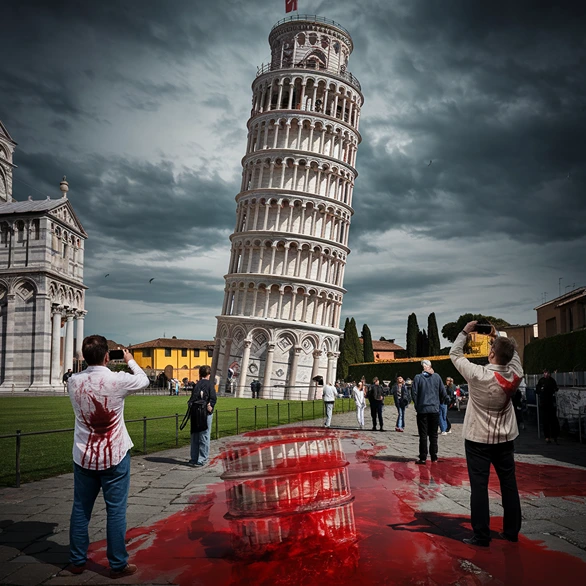
What Are People Doing Near The Towers? And Why?
A few years ago, a post about The Tower of Pisa went highly viral. It said something like: “If aliens come to Earth one day, it will be because of all the strange signs people make near the Tower of Pisa.”
Galileo Galilei might have turned over in his grave if he had seen what people are doing near the Leaning Tower of Pisa today. Yes, we mean those millions of people who take pictures of themselves “holding” the tower, lifting it, climbing it, hanging from it, licking an ice cream cone whose “balls” are the tower, or God knows what other weird things. There are probably also some psychos who take pictures of themselves in erotic positions related to the rape of the tower (which, as you know, is a phallic symbol, even if one that may indicate specific problems with the male genitalia).
If you’ve visited the Leaning Tower of Pisa and haven’t taken pictures of yourself holding it, it’s as if you’ve never been here. You can be cynical about it, laugh at the sight of people making seemingly strange movements without context (because you can’t see the image they’re trying to create), or chuckle when there’s an amusing failure in the pictures, but you have to accept it. There are many advantages to 21st-century digital life, but also disadvantages. An alien attack isn’t such a bad idea, after all.

The Leaning Tower Of Pica Tickets
There are several ways to see the Leaning Tower of Pisa. The easiest is to get to the complex itself, which is free. You can stay there and take the famous photo, like the rest of the world. You must pay if you want to climb the tower or visit other points of interest around the square.
There are many types of Leaning Tower of Pisa tickets, including:
🎫 Climbing the tower for about half an hour, as mentioned, at a specific time and hour. It is essential not to be clever but to arrive at the specified time (and a little before it)
🎫 Visiting one, two, or three of the nearby sites located in the square: the Small Cathedral Museum, the cemetery, and the Baptistery. The amounts are undoubtedly reasonable.
🎫 Want to visit the cathedral? A visit here is free, but due to the rush of visitors, you have to go through the ticket office and get an entrance ticket, which gives you the right to visit here at a specific time (the assumption is that in the cathedral, there can only be up to 90 visitors at a given moment). If you buy a ticket for the tower or other sites in its vicinity, you can enter the cathedral at any time you want
🎫 Guided tours outside or inside the tower
Please note that the tourist load here is serious, so booking your tickets in advance is highly recommended. You can also save the queue at the box office. Some types of tickets also allow you to avoid the queues at the entrance to the complex. And offer free cancellation up to 24 hours before your chosen date.
Where To Buy Leaning Tower Of Pisa Tickets?
Please note that the tourist load here is serious, so booking your tickets in advance is highly recommended. You can also save the queue at the box office. Some types of tickets also allow you to avoid the queues at the entrance to the complex. And offer free cancellation up to 24 hours before your chosen date.
You can buy Leaning Tower of Pisa tickets here:
Even A Tower Can Be An Icon (Sort Of)
The Tower of Pisa is more than a tourist attraction today, no matter how popular it is. Like other famous buildings, you can find a long list of products based on it, which can make it crooked for a day, add an asymmetrical decoration to your living or working environment, or even directly deal with some of the challenges associated with the Tower of Pisa.
Among the notable products we found online, we can mention:
![]() Leaning Tower of Pisa Lego set from the challenging building series, with 345 pieces
Leaning Tower of Pisa Lego set from the challenging building series, with 345 pieces
![]() Leaning Tower of Pisa 3D Puzzle, including lighting
Leaning Tower of Pisa 3D Puzzle, including lighting
![]() Nano (mini) Lego Tower of Pisa, containing 1,073 pieces
Nano (mini) Lego Tower of Pisa, containing 1,073 pieces
![]() Part of a set of miniature figures (figurines) of famous buildings around the world, such as the Tower of Pisa, the Eiffel Tower, the Statue of Liberty, Big Ben, the Taj Mahal and more
Part of a set of miniature figures (figurines) of famous buildings around the world, such as the Tower of Pisa, the Eiffel Tower, the Statue of Liberty, Big Ben, the Taj Mahal and more
![]() In a strategic Tower of Pisa game, you have to place as many people as possible in the swaying tower without the tower collapsing and the people falling. The game is for ages five and up and, according to the manufacturer, works on essential features such as planning, balance, and coordination
In a strategic Tower of Pisa game, you have to place as many people as possible in the swaying tower without the tower collapsing and the people falling. The game is for ages five and up and, according to the manufacturer, works on essential features such as planning, balance, and coordination
![]() Statues of various sizes
Statues of various sizes
![]() Lamps
Lamps





